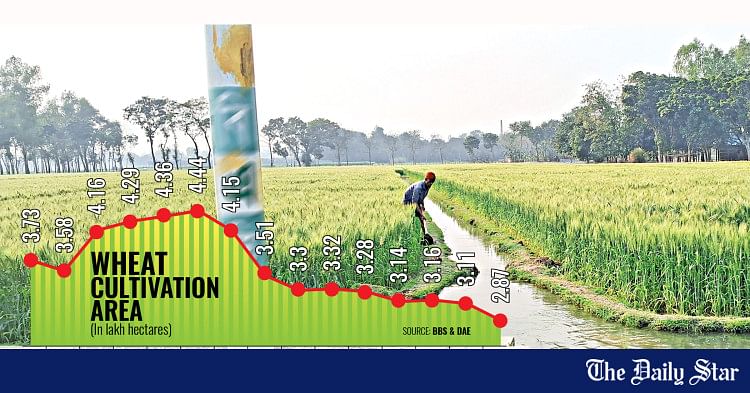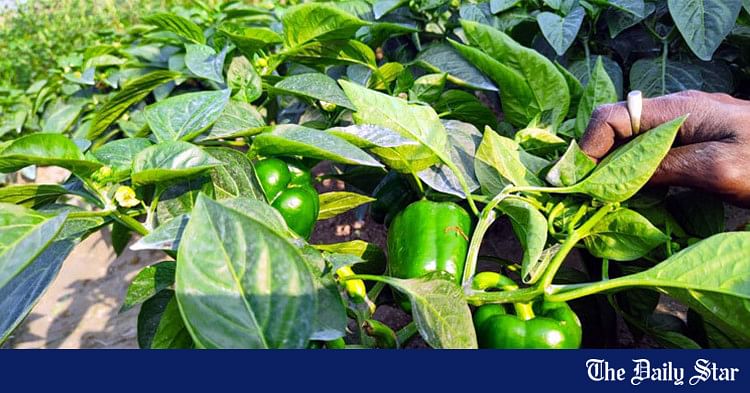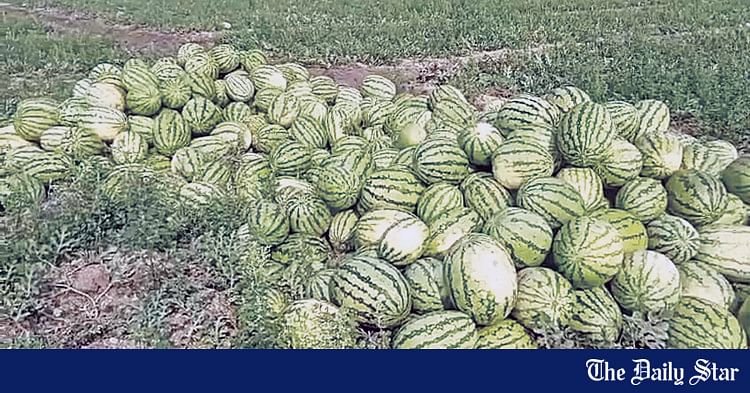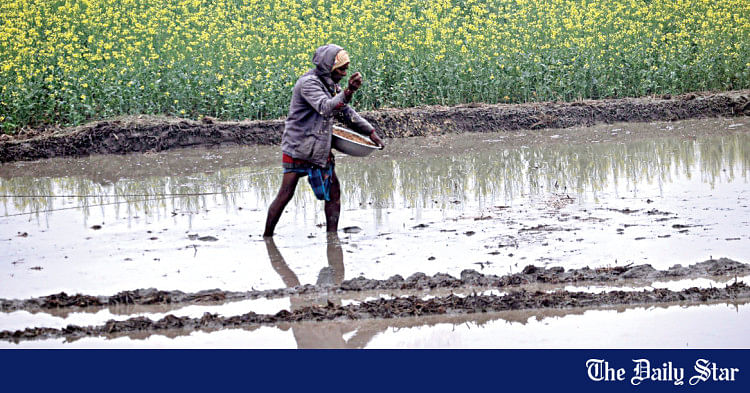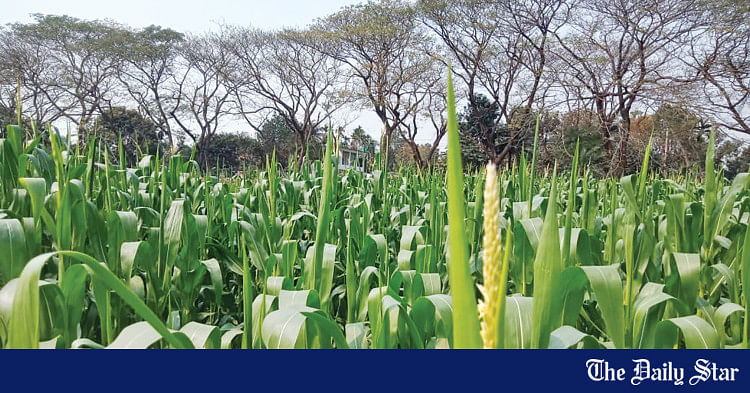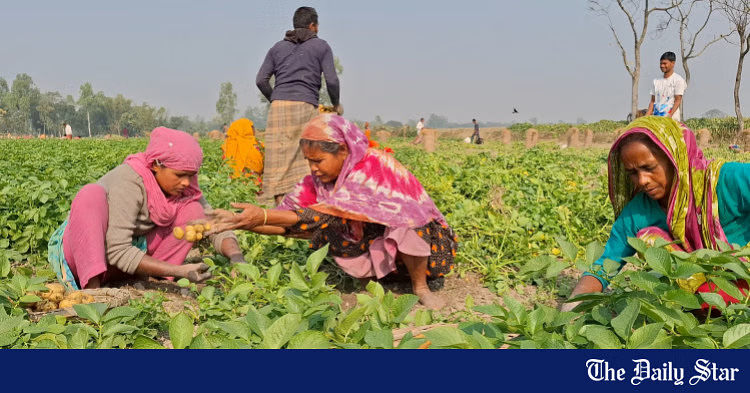- Copy to clipboard
- Thread starter
- #141
Saif
Senior Member
- Joined
- Jan 24, 2024
- Messages
- 15,397
- Reaction score
- 7,874
- Nation

- Residence

- Axis Group


Except for tourism, tulip in Tetulia shows little prospect
In addition to its lush tea gardens and the breathtaking view of the majestic Kanchenjunga, blooming tulips have emerged as another jewel in Panchagarh’s winter landscape -- but only as a tourist attraction, as farmers struggle to maintain cultivation and earn a profit.
Except for tourism, tulip in Tetulia shows little prospect

According to tulip growers and agricultural officials, the country’s weather and soil are not suitable for the cultivation of this flower, which mainly grows in southern Europe and central Asia. Photo: Md Quamrul Islam Rubaiyat
In addition to its lush tea gardens and the breathtaking view of the majestic Kanchenjunga, blooming tulips have emerged as another jewel in Panchagarh's winter landscape -- but only as a tourist attraction, as farmers struggle to maintain cultivation and earn a profit.
According to tulip growers and agricultural officials, the country's weather and soil are not suitable for the cultivation of this flower, which mainly grows in southern Europe and central Asia.
Besides, tulip bulbs are scarce in Bangladesh, often requiring imports and careful preservation in controlled temperatures before planting.
This season, 13 female farmers from Tetulia's Darjeepara and Sharialjoth villages planted 20,000 tulip bulbs on a collectively contributed 70-decimal plot. This is half of the 40,000 bulbs planted in 2022.
In that year, eight farmers in Tetulia first cultivated the flower in the upazila under a pilot project of the Eco-Social Development Organisation (ESDO), a non-governmental organisation.
ESDO initially imported the bulbs from the Netherlands. However, some of the bulbs planted this season were preserved from the previous year's yield.
"After consulting with an agro-expert from the Netherlands, we experimentally preserved 3,000 locally produced bulbs in a cold storage facility, maintaining a temperature of 4 degrees Celsius. These bulbs were taken out at the beginning of the current winter season and planted in the field," said Aynul Haque, project supervisor and head of inclusive microfinance at ESDO.

However, Haque told The Daily Star that the locally preserved bulbs failed to bloom properly or exhibit adequate growth.
Tamanna Ferdous, upazila agriculture officer of Tetulia, said that Bangladesh's weather is generally not conducive to tulip cultivation, but Tetulia's winter temperature, which hovers around 20 degrees Celsius during the day, allows the flowers to bloom successfully.
She said that acidic, sandy-loamy soil with a pH between six and seven is ideal for growing tulips, which require daytime temperatures below 20 degrees Celsius and night-time temperatures between 5 and 12 degrees Celsius.
She added that soil preparation involves limited use of chemical fertilisers and sufficient organic manure.
Farjana Nasrin Khan, head of the Floriculture Division at the Bangladesh Agricultural Research Institute, told The Daily Star that tulip cultivation in the country faces several challenges. Unlike traditional cut flowers, the potential of tulip cultivation here is more closely tied to tourism.
"People prefer to purchase tulips before they bloom, but locally cultivated tulips tend to bloom prematurely due to higher-than-required temperatures," she explained.
Moreover, there is no viable way to reuse locally preserved bulbs because of weather constraints. "After blooming, the bulbs require at least a month under optimal temperature conditions to mature properly for preservation, which is not feasible in the local climate," she added.
Md Shahid Uz Zaman, executive director of ESDO, said that in recent years, many visitors from different parts of the country have come to Tetulia to catch a glimpse of Kanchenjunga, the world's third-highest mountain peak.
"If tulip cultivation proceeds in Tetulia as planned, it could become an additional attraction for tourists and boost the northern region's tourism sector, ultimately improving the lives of the locals," he said.
As winter lasts for about four months in Tetulia, the temperature is almost ideal for tulip cultivation, he added.
According to tulip growers and agricultural officials, the country’s weather and soil are not suitable for the cultivation of this flower, which mainly grows in southern Europe and central Asia. Photo: Md Quamrul Islam Rubaiyat
In addition to its lush tea gardens and the breathtaking view of the majestic Kanchenjunga, blooming tulips have emerged as another jewel in Panchagarh's winter landscape -- but only as a tourist attraction, as farmers struggle to maintain cultivation and earn a profit.
According to tulip growers and agricultural officials, the country's weather and soil are not suitable for the cultivation of this flower, which mainly grows in southern Europe and central Asia.
Besides, tulip bulbs are scarce in Bangladesh, often requiring imports and careful preservation in controlled temperatures before planting.
This season, 13 female farmers from Tetulia's Darjeepara and Sharialjoth villages planted 20,000 tulip bulbs on a collectively contributed 70-decimal plot. This is half of the 40,000 bulbs planted in 2022.
In that year, eight farmers in Tetulia first cultivated the flower in the upazila under a pilot project of the Eco-Social Development Organisation (ESDO), a non-governmental organisation.
ESDO initially imported the bulbs from the Netherlands. However, some of the bulbs planted this season were preserved from the previous year's yield.
"After consulting with an agro-expert from the Netherlands, we experimentally preserved 3,000 locally produced bulbs in a cold storage facility, maintaining a temperature of 4 degrees Celsius. These bulbs were taken out at the beginning of the current winter season and planted in the field," said Aynul Haque, project supervisor and head of inclusive microfinance at ESDO.
However, Haque told The Daily Star that the locally preserved bulbs failed to bloom properly or exhibit adequate growth.
Tamanna Ferdous, upazila agriculture officer of Tetulia, said that Bangladesh's weather is generally not conducive to tulip cultivation, but Tetulia's winter temperature, which hovers around 20 degrees Celsius during the day, allows the flowers to bloom successfully.
She said that acidic, sandy-loamy soil with a pH between six and seven is ideal for growing tulips, which require daytime temperatures below 20 degrees Celsius and night-time temperatures between 5 and 12 degrees Celsius.
She added that soil preparation involves limited use of chemical fertilisers and sufficient organic manure.
Farjana Nasrin Khan, head of the Floriculture Division at the Bangladesh Agricultural Research Institute, told The Daily Star that tulip cultivation in the country faces several challenges. Unlike traditional cut flowers, the potential of tulip cultivation here is more closely tied to tourism.
"People prefer to purchase tulips before they bloom, but locally cultivated tulips tend to bloom prematurely due to higher-than-required temperatures," she explained.
Moreover, there is no viable way to reuse locally preserved bulbs because of weather constraints. "After blooming, the bulbs require at least a month under optimal temperature conditions to mature properly for preservation, which is not feasible in the local climate," she added.
Md Shahid Uz Zaman, executive director of ESDO, said that in recent years, many visitors from different parts of the country have come to Tetulia to catch a glimpse of Kanchenjunga, the world's third-highest mountain peak.
"If tulip cultivation proceeds in Tetulia as planned, it could become an additional attraction for tourists and boost the northern region's tourism sector, ultimately improving the lives of the locals," he said.
As winter lasts for about four months in Tetulia, the temperature is almost ideal for tulip cultivation, he added.










